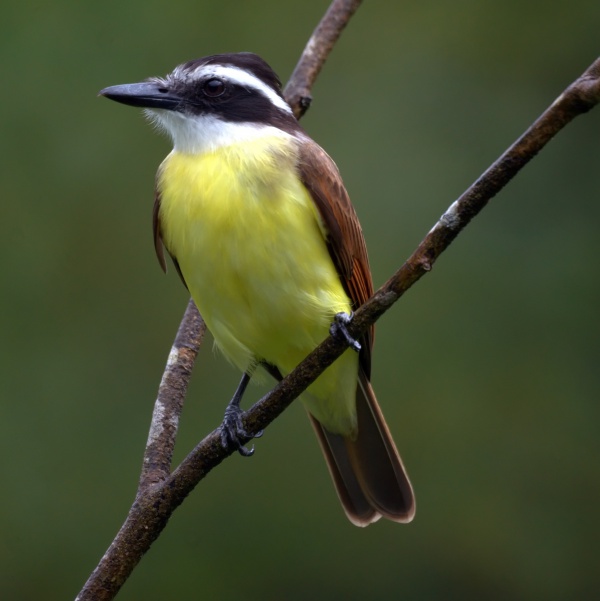Facts About Great kiskadee
The great kiskadee, a captivating bird from the tyrant flycatcher family (Tyrannidae), is the sole member of the genus Pitangus. These birds inhabit a wide range of environments, extending from southern Texas to Argentina and Uruguay.
First described by Georg Marcgrave in 1648, the great kiskadee received its scientific name, Lanius sulphuratus, from Carl Linnaeus in 1766. William Swainson subsequently introduced the genus Pitangus in 1827. Today, 10 recognized subspecies of this bird exist.
As one of the largest tyrant flycatchers, the great kiskadee measures between 25 to 28 cm in length and weighs around 53 to 71.5 grams. Its distinctive black head, brown upperparts, and characteristic call "BEE-tee-WEE" make it easily identifiable. The bird's omnivorous diet includes insects, small vertebrates, and occasionally fish or fruit. It is a familiar presence in urban areas throughout Latin America.
When nesting, great kiskadees construct dome-shaped nests and typically lay 3 to 4 eggs. Both parents participate in feeding the chicks and are known for aggressively defending their territory and nests from predators.
Due to its extensive distribution and adaptability, the great kiskadee is not considered threatened by the IUCN. It thrives in diverse habitats, underscoring its versatility and resilience.

 Argentina
Argentina